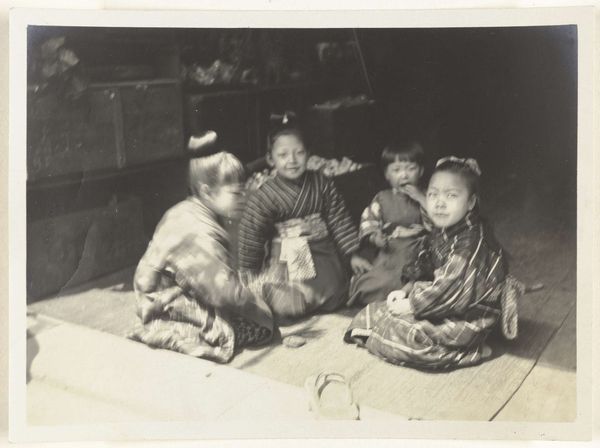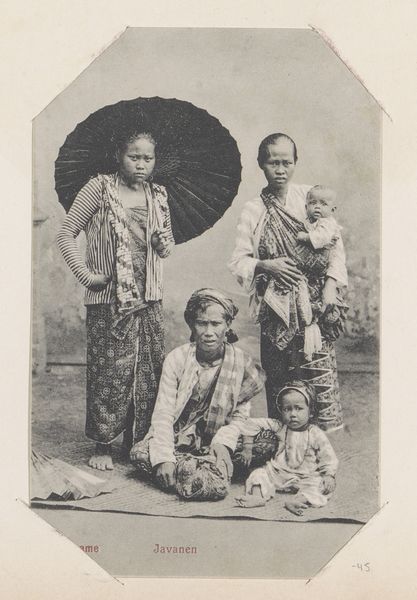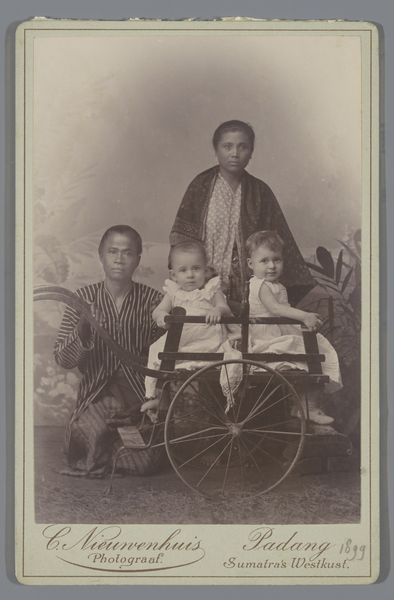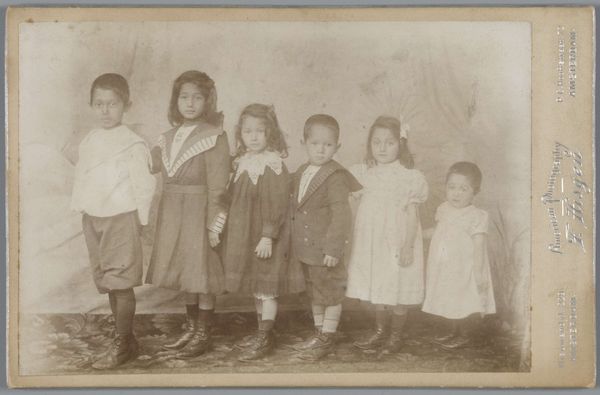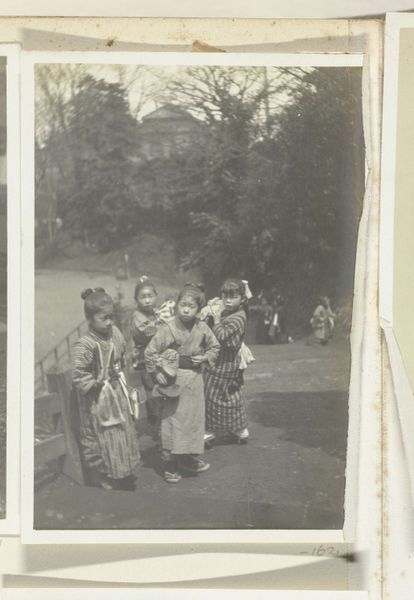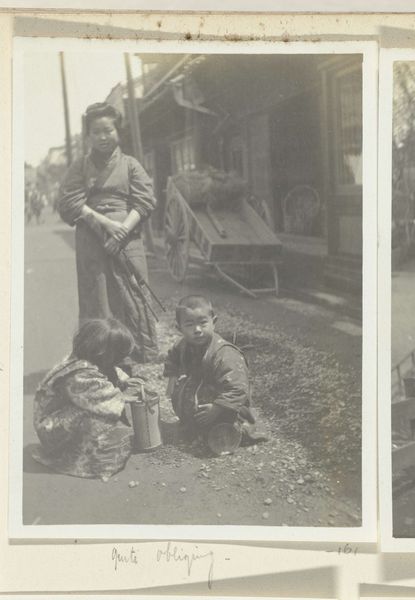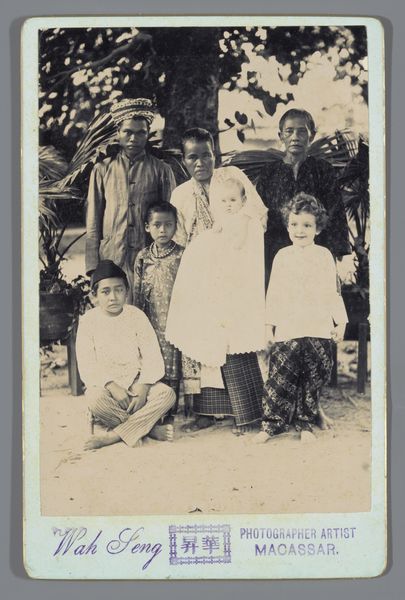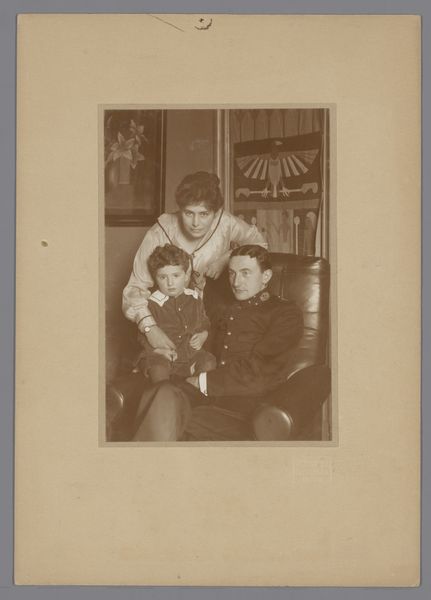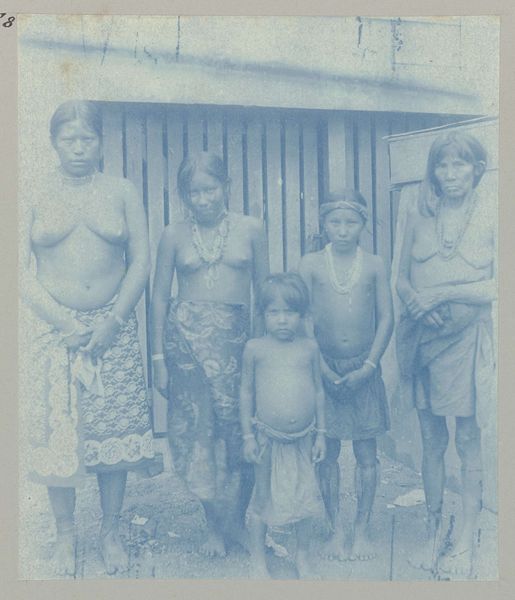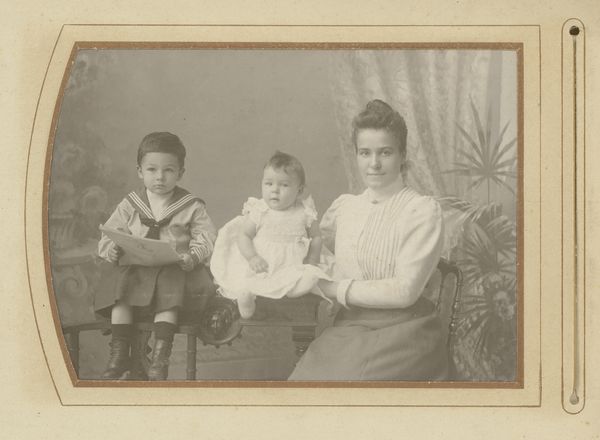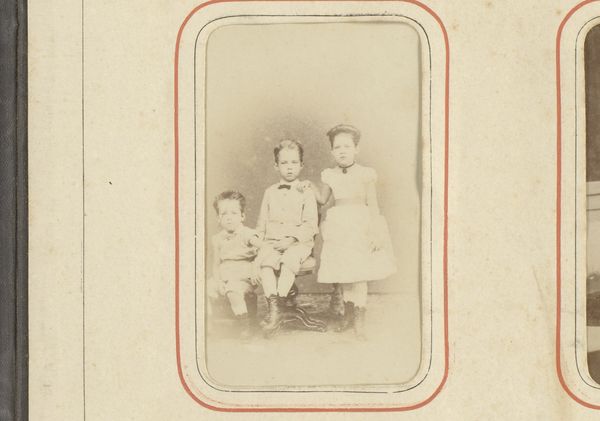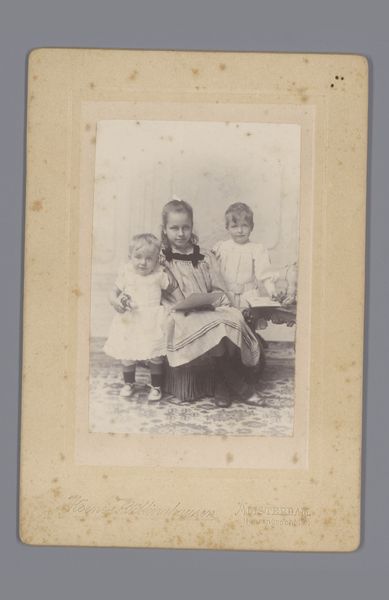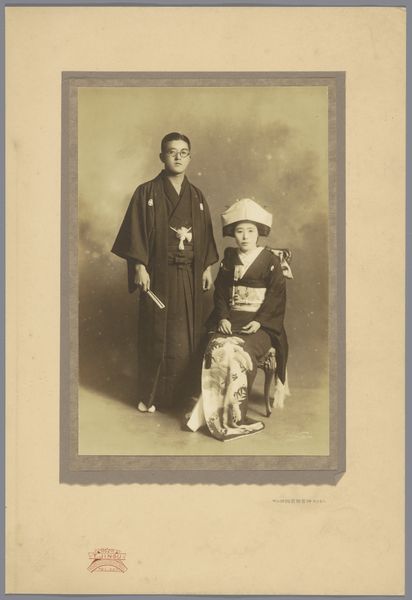
photography
#
portrait
#
asian-art
#
photography
#
group-portraits
#
realism
Dimensions: height 100 mm, width 74 mm, height 363 mm, width 268 mm
Copyright: Rijks Museum: Open Domain
Editor: So, here we have Geldolph Adriaan Kessler's photograph, "Cheeky but flattered," taken before 1908. It's a group portrait in black and white, and it strikes me as a very direct, almost anthropological documentation of childhood. What's your read on this work? Curator: I think you've hit on a crucial aspect. It's easy to view this photograph purely through an aesthetic lens, focusing on its realism. However, we must also consider the socio-political context. Early 20th-century photography in colonized regions often served as a tool for documentation and, arguably, a means of asserting control through representation. Editor: Asserting control? How so? Curator: By fixing an image of these children, likely from a culture viewed as 'other' by the European gaze, the photograph participates in a power dynamic. The subjects are rendered as objects of study, part of a larger colonial project of knowing and classifying. Does the title "Cheeky but flattered" itself reveal something about this dynamic? Editor: I see what you mean. The title implies a certain… ownership, or perhaps even a justification of the photographer's presence. Was Kessler’s photography generally informed by this colonial gaze? Curator: Without deeper research into Kessler's motivations, it’s difficult to say definitively. However, the widespread use of photography during that era as a means of reinforcing social hierarchies and cultural stereotypes is undeniable. What do you think the Rijksmuseum’s decision to display this says about the role of museums today? Editor: It seems like museums are actively engaging with their own histories and the complexities of representation, inviting critical discussions about colonialism and its legacy. Thank you for providing me with this lens. Curator: Absolutely. Considering the social implications broadens our understanding and makes our interaction with historical works so much more thoughtful and respectful.
Comments
No comments
Be the first to comment and join the conversation on the ultimate creative platform.
